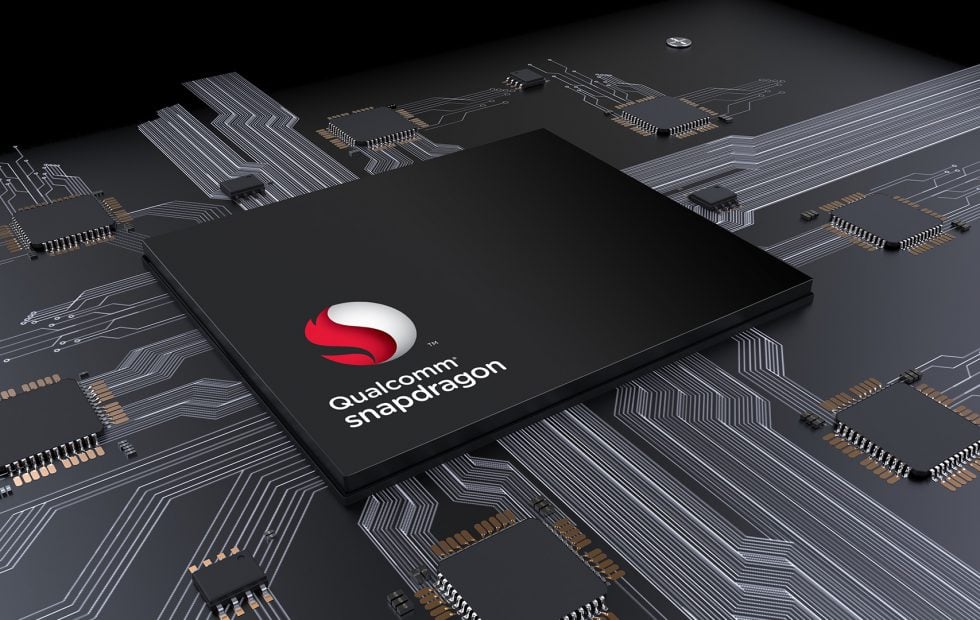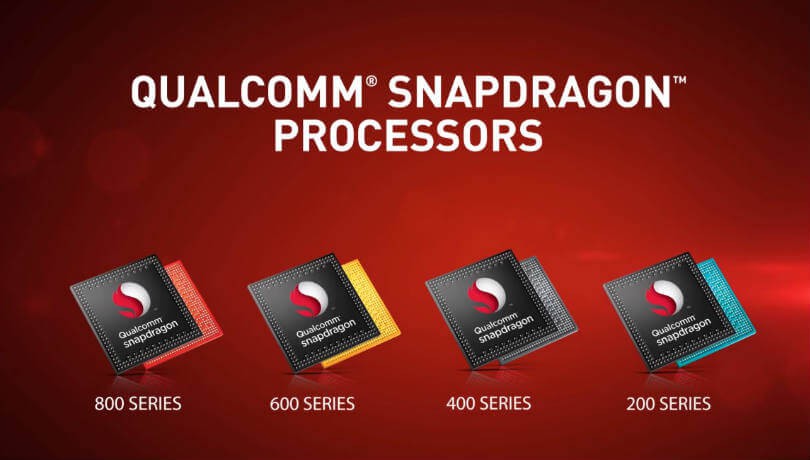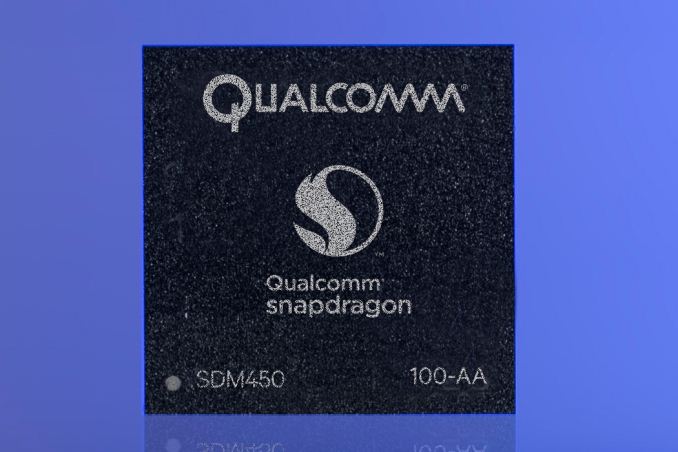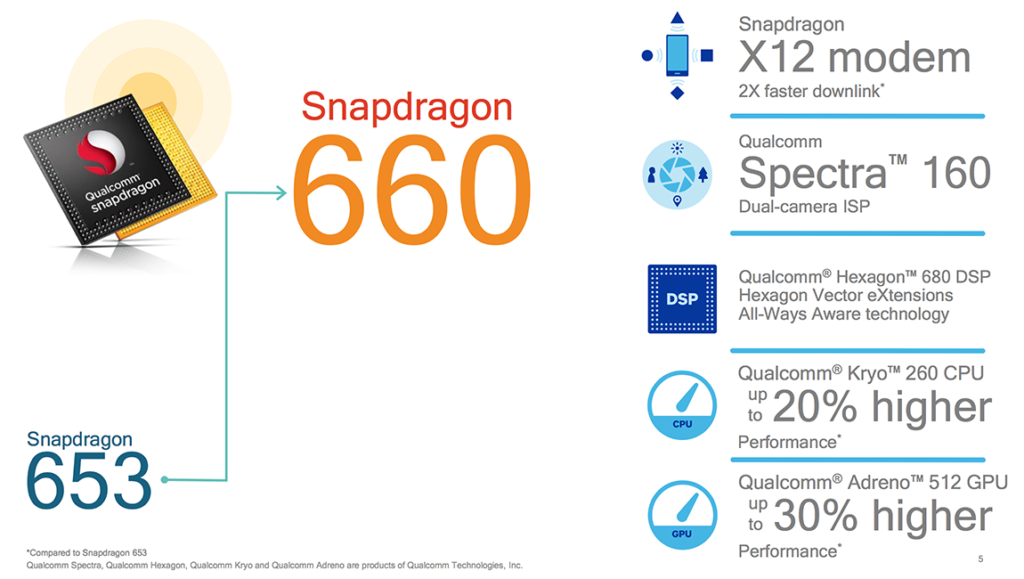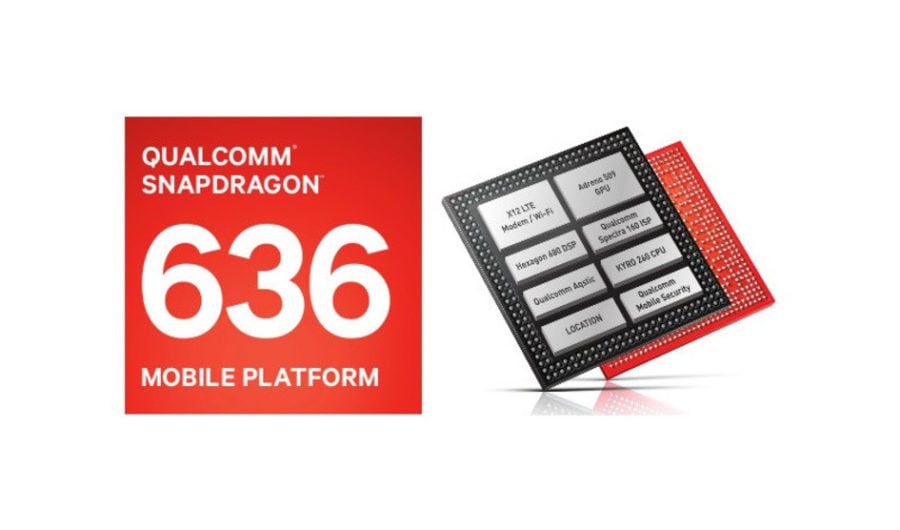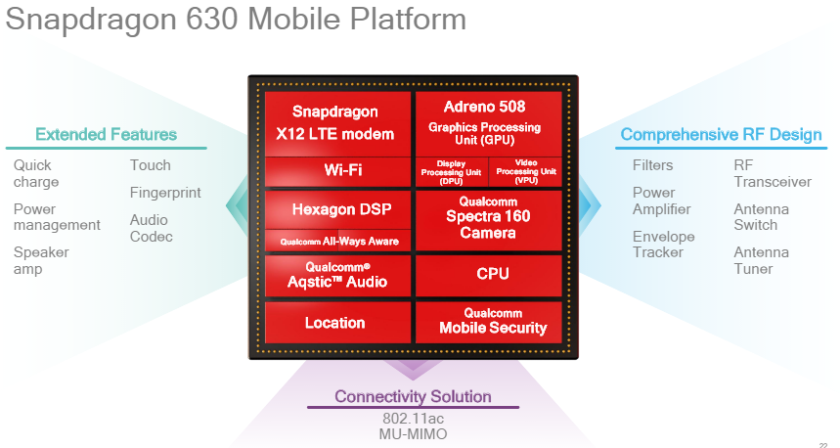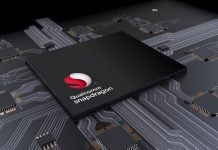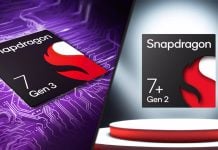There’s no doubt that Qualcomm is the king of mobile processors and the company has managed to penetrate all the three major segments in the market: high-end, mid-range, low-end. Mediatek has been giving tough competition to the US based chip maker in the budget and mid-range markets but even in these two segments, the company has managed to gain ground in recent times, all thanks to its efficient set of processors from the 600 and 400 series. However, sometimes it could be hard keeping a track of where each processor stands in the series. So, this article aims to improve your understanding of the processor that goes inside your smartphones, specifically ones from the Qualcomm Snapdragon series.
It was necessary to write this article because Qualcomm’s Snapdragon series naming isn’t as straightforward as you might think. For example, the newly announced Snapdragon 632 isn’t really better than the Snapdragon 630 (apart from its custom CPU cores advantage) that was announced way back in May 2017. Logically, considering the naming scheme, we would immediately assume that the SD632 is the better chipset but that’s not really the case. Similarly, the Snapdragon 450 chipset that was announced back in June 2017 is very similar to Snapdragon 625, despite being from a low-end 400 series.
Specifically, we will be taking a look at six processors for mid-range smartphones from Qualcomm, namely the Snapdragon 660, Snapdragon 636, Snapdragon 632, Snapdragon 630, Snapdragon 625, and also the Snapdragon 450.
We can divide these processors into further two sections for ease of understanding: Upper mid-range and mid-range.
Upper mid-range has two main chipsets: Snapdragon 660 and Snapdragon 636. I know many would argue that there’s the Snapdragon 710 chipset too, but with 10nm manufacturing node and custom Kryo 360 cores that are based on Cortex A75, we can no longer call it a mid-range chipset. At best, we could say it’s a premium mid-ranger but with such high-end specs, it’s more close to the 800 series flagships than the 600 series chipsets.
Coming back to the 600 series chipsets, in the mid-range segment, we can include four SoCs, namely, Snapdragon 630, Snapdragon 632, Snapdragon 625, and Snapdragon 450. Again, many could argue that the 450 is from the low-end series and doesn’t really deserve to be called as a mid-range processor. But for reasons mentioned below, I feel that the 450 is better placed in the mid-range segment rather than the budget series.
Now that we have placed these processors in their respective subsections, let’s take a look at each section in detail. First, let’s take a look at the upper mid-range processors.
Snapdragon 660 and Snapdragon 636 are two of the most powerful processors in the 600 series from Qualcomm. These 2017 processors are unique in the sense that they have custom cores, a first in the 600 series. Specifically, the Snapdragon 660 that was announced back in May 2017 was the first 600 series chip to use custom Kryo cores. Snapdragon 636 joined the lineup later in October. Given that they were going to power the best mid-rangers in the market, it made sense why Qualcomm would use custom cores in these two chipsets. However, this year, in June, Qualcomm made another entry in the lineup with the Snapdragon 632 and surprisingly, even this new chipset boasted eight custom kryo cores. Why surprising? Because, despite its 632 name, this particular chip is going to power the cheaper mid-rangers of 2018 and is better put as an upgrade to the Snapdragon 625 instead of the SD630. We’ll talk about these processors in detail in the next section but now, let’s come back to the two power packed processors of 600 series, the SD660 and SD636.
Snapdragon 660 & 636:
Snapdragon 660 and 636 are really very close brothers. From their names, many would assume that the SD632 or SD630 are closer to SD636 than SD660. But it’s the opposite case here. In fact, this is another example why Qualcomm needs to better their naming strategy. Personally, I would have called SD636 more like SD646 or something closer to SD660.
There are only four minor differences between the Snapdragon 660 vs Snapdragon 636.
- Clock speed of Kryo 260G performance clusters (2.2GHz vs 1.8GHz)
- GPU: Adreno 512 vs Adreno 509
- LPDDR4 @ 1866MHz vs LPDDR4 @ 1333MHz
- Display Support: QHD vs FHD+ (18:9) | External Support: 4K vs 1080p
Apart from these, the two processors share the same specs. So, both feature the same semi-custom Kryo 260 cores in a 4+4 cluster. There are 4 x Kryo Gold cores and 4 x Kryo Silver cores based on Cortex A73 and Cortex A53 respectively. Only the performance cores are clocked at different frequencies (2.2GHz vs 1.8GHz). It might also be worth mentioning that these two are manufactured on the 14nm LPP process, but then, all of the SoC’s considered in this article are based on 14nm manufacturing node.
There’s difference in the GPU as well. The Snapdragon 660 features the more powerful Adreno 512 vs 509 on the SD636. I couldn’t find a lot of details about the Adreno 509, but we know that it’s based on 14nm process like the 512 (and unlike the Adreno 510 which was based on 28nm). Despite being placed below the 510 in naming, in terms of performance, the Adreno 509 could be better. It’s also going to be more efficient. But Adreno 512 is definitely the better GPU of the two, with a appox. clock speed of 800MHz, with around 240 GFlops.
Another difference is the support for dual channel LPDDR4@1866MHz vs LPDDR4@1333MHz on SD660 vs SD636. However, both support RAM up to 8GB and eMMC as well as UFS storage.
Coming to the similarities, the core specs are the same for both the chips. So apart from the same Kryo 260 cores inside, you get the same X12 LTE modem with Cat. 13/ 12 support (150Mbps uplink | 600Mbps downlink ) and 3 x 20MHz CA. There’s the Hexagon 680 DSP, Qualcomm’s Spectra 160 ISP with ClearSight technology, 24MP single camera support and 16MP dual camera support. The chip supports video capture and playback at up to 4K UHD @ 30fps resolution. Both the chips support Quick Charge 4.0 and machine learning frameworks like Tensorflow, caffe via Snapdragon Neural Processing Engine.
In short, you can call the Snapdragon 636 as the efficient (lite) version of the Snapdragon 660!
Snapdragon 630:
Notice how I skipped SD632? It’s better suited with SD625 and SD450! Snapdragon 630 has most of the bells and whistles of Snapdragon 636 but it’s much slower because of its octa-core Cortex A53 cores. You really miss out on the A73 based performance cores here but it’s good for efficiency. So, if Snapdragon 636 was the lite version of SD660, then SD630 is kind of the lite and efficient version of the SD636.
SD630 features eight Cortex A53 cores with 4 x A53 @ 2.2GHz and 4 x A53 @ 1.8GHz. So, performance is just average but Adreno 508 is pretty decent and offers up to 30% graphics and enhanced gaming performance as compared to Adreno 506 inside the SD626. Apart from the significant decrease in CPU performance, rest of the specs are quite similar to the above two SoCs.
So the Snapdragon 630 supports Qualcomm’s Neural processing engine, X12 LTE with Cat. 13/ 12 downlink / uplink, 24MP single camera with Spectra 160 ISP (ClearSight tech), LPDDR4 @ 1333MHz with up to 8GB RAM support and eMMC / UFS storage support, 4K UHD capture and playback, and up to FHD+ display.
Note that dual camera support on the SD630 goes down to dual 13MP setup instead of dual 16MP on SD660 and SD636.
What makes SD630 closer to SD636 than SD632 or 625 is that it comes with support for Qualcomm’s Neural Processing Engine (for AI). Plus, you have Quick Charge 4.0 support too!
It is worth mentioning that SD660, SD636, and SD630 are the only three SoCs in the 600/400 series to support AI via NPE and Quick Charge 4.0. In terms of connectivity, these three support BL 5.0, and USB 3.1.
| SD660 | SD636 | SD630 | |
| RELEASE: | May 2017 | Oct. 2017 | May 2017 |
| Process | 14nm | 14nm | 14nm |
| CPU | 4 x KryoG 260 @2.2GHz +4 x KryoS 260 @1.8GHz | 4 x KryoG 260 @1.8GHz +4 x KryoS 260 @1.8GHz | 4 x A53 @ 2.2GHz + 4 x A53 @ 1.8GHz |
| GPU | Adreno 512 | Adreno 509 | Adreno 508 |
| MODEM | X12 LTE (Cat. 13 = 150Mbps Uplink / Cat. 12 = 600Mbps Downlink) + 3 x 20MHz CA | X12 LTE (Cat. 13 = 150Mbps Uplink / Cat. 12 = 600Mbps Downlink) + 3 x 20MHz CA | X12 LTE (Cat. 13 = 150Mbps Uplink / Cat. 12 = 600Mbps Downlink) + 3 x 20MHz CA |
| DSP | Hexagon 680 | Hexagon 680 | Hexagon 642 |
| CAMERA | 24MP Single | 16MP Dual | Spectra 160 | 24MP Single | 16MP Dual | Spectra 160 | 24MP Single | 13MP Dual | Spectra 160 |
| VIDEO | 4K UHD @ 30fps encode and decode | 4K UHD @ 30fps encode and decode | 4K UHD @ 30fps encode and decode |
| DISPLAY | QHD | FHD+ | FHD+ |
| CONNECTIVITY | BL 5.0, USB 3.1, QC 4.0 | BL 5.0, USB 3.1, QC 4.0 | BL 5.0, USB 3.1, QC 4.0 |
Snapdragon 632, Snapdragon 625, & Snapdragon 450:
Snapdragon 632 is really the star of the lower mid-range series. Qualcomm’s strategy was pretty simple: It took Snapdragon 625 and boosted its CPU performance with custom Kryo cores. That’s it! Everything else is the same!
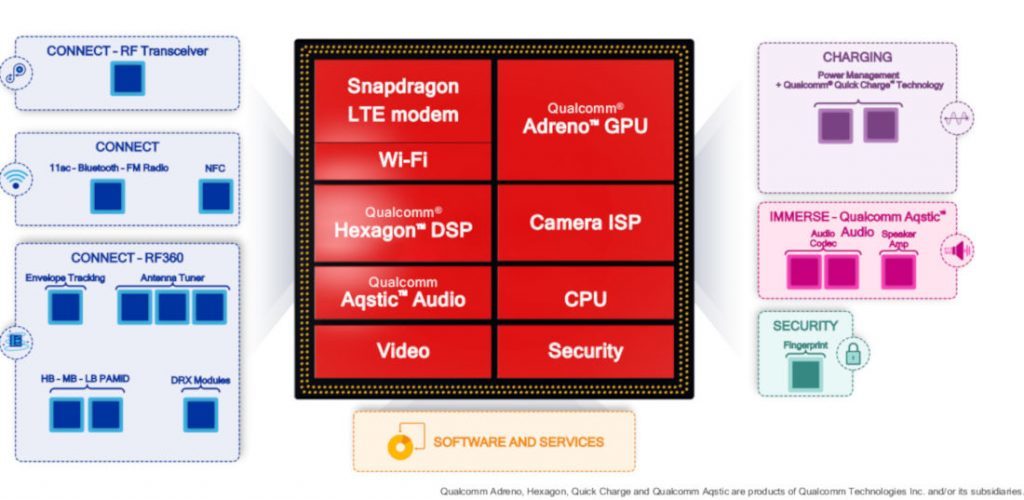
So the SD632 has 4 x Kryo 250 Gold performance (A73) cores at 1.8GHz and 4 x Kryo 250 Silver efficient (A53) at 1.8GHz instead of the 8 x Cortex A53 @ 2.0GHz cores on the SD625. Rest of the specs are exactly the same, including the Adreno 506 GPU. I have not really considered SD626 in this article because this particular chip hasn’t managed to get a lot of support from market players. Most companies are still opting for SD625 over 626 and the difference isn’t really significant.
We can actually bring Snapdragon 450 too in this comparison! The SD450 is basically a lower clocked version of the Snapdragon 625, with 8 x Cortex A53 cores at 1.8GHz instead of 2.0GHz. Another difference would be in video encoding and decoding resolutions. So, SD632, SD625 can encode and decode videos at 4K UHD @ 30 fps while the SD450 can only do it in FHD+ @ 60fps.
Now coming to their similarities in specs, SD632 vs SD625 vs SD450 have the following common features.
- Adreno 506 GPU (clock speeds may differ)
- Hexagon 546 DSP
- 24MP single cam | 13MP dual cam support
- FHD+ Display support
- X9 LTE Cat 13/ 7 (150Mbps uplink | 300Mbps downlink), 2 x 20MHz CA
- Quick Charge 3.0
- USB 3.0
In terms of Bluetooth connectivity, Snapdragon 632 did get an upgrade to the new 5.0 version. The SD625 and 450 chips support BL 4.1+ LE.
So, in this section, SD632 is the best chip, and SD625 could be called as the lite version of SD632 and SD450 as the lite version of SD625.
| SD632 | SD625 | SD450 | |
| RELEASE: | June 2018 | Feb. 2016 | June 2017 |
| Process | 14nm | 14nm | 14nm |
| CPU | 4 x KryoG 250 @1.8GHz +4 x KryoS 250 @1.8GHz | 8 x Cortex [email protected] | 8 x Cortex [email protected] |
| GPU | Adreno 506 | Adreno 506 | Adreno 506 |
| MODEM | X9 LTE (Cat. 13 = 150Mbps Uplink / Cat. 7 = 300Mbps Downlink) + 2 x 20MHz CA | X9 LTE (Cat. 13 = 150Mbps Uplink / Cat. 7 = 300Mbps Downlink) + 2 x 20MHz CA | X9 LTE (Cat. 13 = 150Mbps Uplink / Cat. 7 = 300Mbps Downlink) + 2 x 20MHz CA |
| DSP | Hexagon 546 | Hexagon 546 | Hexagon 546 |
| CAMERA | 24MP Single | 13MP Dual | 24MP Single | 13MP Dual | 24MP Single | 13MP Dual |
| VIDEO | 4K UHD @ 30fps encode and decode | 4K UHD @ 30fps encode and decode | FHD+ @ 60fps encode and decode |
| DISPLAY | FHD+ | FHD | FHD |
| CONNECTIVITY | BL 5.0, USB 3.0, QC 3.0 | BL 4.1+, USB 3.0, QC 3.0 | BL 4.1+, USB 3.0, QC 3.0 |
This article was not meant to be exhaustive. I may not have considered each and every minute differences between these chipsets but organising Qualcomm’s Snapdragon processors based on their specifications instead of their names was essential. As you might have realised now, SD632 and SD450 are way more similar than what you might have thought before and Snapdragon 630 is quite closer to SD636 than SD625.
I personally believe its very important to understand the processors that power your smartphones and this article was meant to be a rough guideline of where each Snapdragon mid-range SoC stands in the entire lineup.
Please let me know your thoughts on this article as well as the Snapdragon chip lineup.

